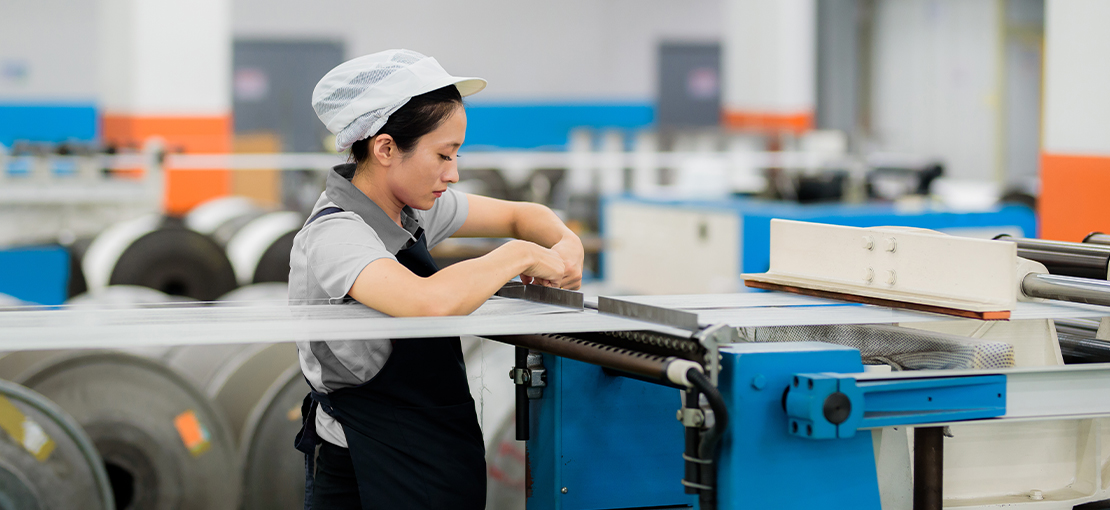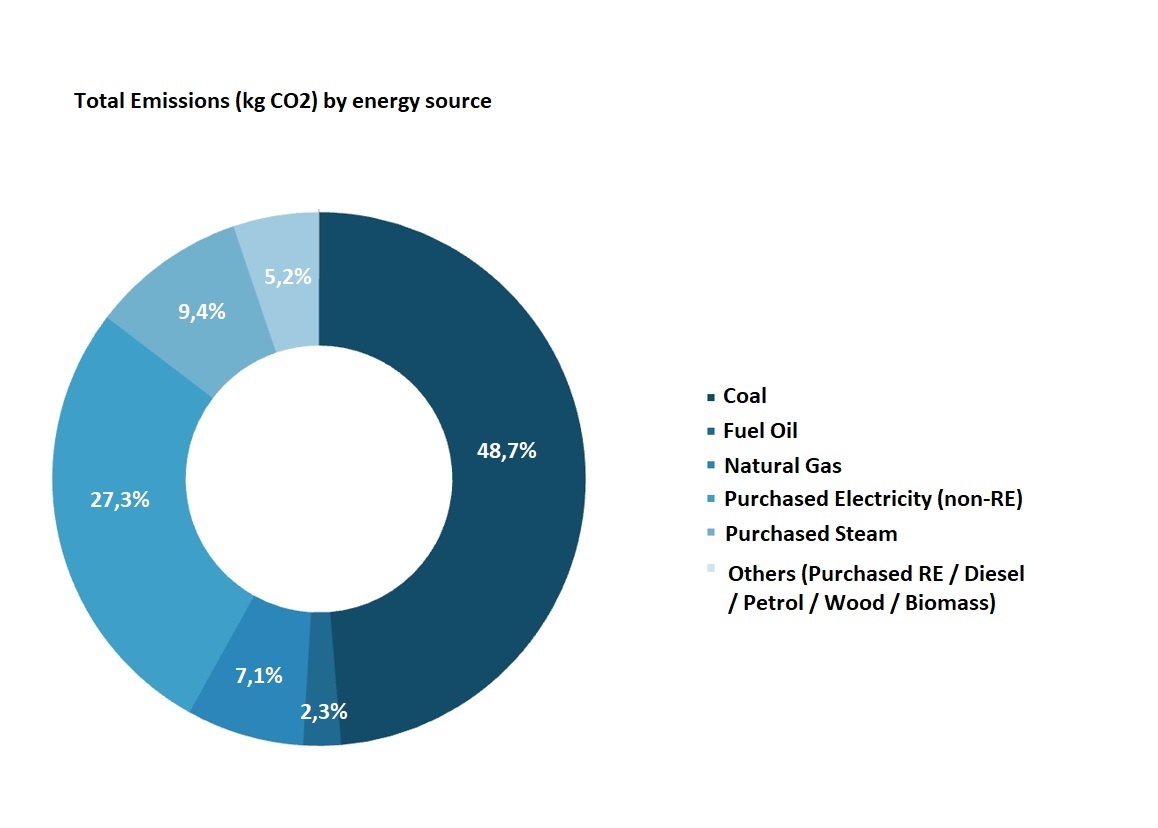
Energy management in the supply chain
Our goal: Energy efficiency and conversion to renewable energy sources
VAUDE has set itself ambitious, science-based goals in order to achieve climate-neutral manufacturing for all its products worldwide in the future. With Science Based Targets (SBT), VAUDE wants to make its contribution to limiting global warming to a maximum of 1.5 degrees in accordance with the goals of the Paris Climate Agreement. Read more about the VAUDE climate strategy here

»In order to achieve climate-neutral product manufacturing, we will first optimize our supply chain processes from material production to the finished product to ensure maximum conservation of resources as well as high material and energy efficiency and then compensate for unavoidable emissions.«
Measuring energy consumption, reducing emissions
One of the largest sources of greenhouse gas emissions at VAUDE comes from the energy consumption of our suppliers. Even though we have worked for years to raise awareness on this issue, many of our suppliers themselves are still working on making their energy consumption more transparent and many are still using climate-damaging fossil fuels. Not just at VAUDE, of course. The global textile industry continues to contribute significantly to the climate crisis. More information on this from the Federal Environment Agency here
We have a long road ahead of us with our suppliers in the coming years. Since 2019, we have included the energy consumption of our most important material suppliers in the VAUDE climate footprint. Therefore, we know that the reduction of energy consumption in material production must be an absolute focus of our supplier management, in addition to the great challenge of converting energy consumption at suppliers to renewable energy sources such as wind, sun or hydropower.
Concrete figures on emissions from energy consumption in the supply chain at VAUDE can be found here
Creating energy consumption transparency
The first challenge is to obtain reliable data on energy consumption. VAUDE is working with the Facilities Environmental Module (FEM) from the Higg Index, a software that is becoming increasingly popular in the textile industry and also with our suppliers. More about the Higg Index here
As a medium-sized company, VAUDE orders account for a small share of the annual production volume of many material manufacturers so our influence there is also small. This applies to the producers who assemble and sew VAUDE products, but even more so to the large companies that manufacture the source materials such as fabric panels, zippers or tent poles.
We can only try to be persuasive and help people to help themselves – ideally together with other companies that also use materials from the facilities. That's why one focus of our work at present is to initiate joint projects with other outdoor brands on energy management in the supply chain.
EOG Supply Chain Decarbonisation Project
Together with nine other outdoor brands, we have been working to reduce greenhouse gas emissions in our supply chain and increase the use of renewable energy in the European Outdoor Group's (EOG) Supply Chain Decarbonisation Project (SCDP) since 2021.
The costs of the project were shared by the outdoor brands; there were no costs for the suppliers.
The project comprised three phases: Supplier Mapping, Carbon Tech Assessment (CTA) and Carbon Leadership Program (CLP). In the first step, Supplier Mapping, we worked with the other outdoor brands to assess which common suppliers we have in our supply chains. Since we already knew in advance that most CO2 emissions were coming from Tier 2 suppliers in Taiwan and China, we focused on them for the mapping. As we already expected, there were many overlaps in our supply chains. This resulted in a final supplier list for the project, including our largest and therefore most important suppliers for CO2 savings.
For the next phase, the Carbon Tech Assessment, we brought in an external service provider with a great deal of expertise in energy management in textile supply chains. The team worked with the suppliers to develop the CTAs. The CTAs are comprehensive questionnaires with information on energy consumption and sources, the efficiency of dyeing machines and processes, and the level of development of energy management systems and planned projects. Using this information, the team determined the potential CO2 savings over the next 5 years for each supplier. The savings potential for our suppliers varies from 20% - 60%. The suppliers with a high savings potential are those that, unfortunately, still use coal for energy production.
The following chart shows which energy sources generate the most CO2 emissions among the suppliers from the project. At 48.7%, coal is the largest source of CO2 emissions among suppliers, followed by fuel oil at 27.3%.

It is one of our highest priorities to urgently advance the energy system transformation for precisely these suppliers together with the other outdoor brands. However, the results of the CTAs also showed that the political framework conditions must change so that there can be an energy system transformation in the textile supply chain. Access to energy from renewable sources is currently still very limited and expensive for our suppliers, as other sectors in Taiwan (e.g. the semiconductor industry) have a privilege to access green electricity.
Based on the results of the CTAs, suppliers then went through the Carbon Leadership Program (CLP). The CLP included on-site or online energy management assessments, supplier workshops and training on carbon management and energy efficiency, and processing of the Carbon Toolkit. The carbon toolkit contains, among other things, all energy consumption and CO2 emissions of the last years, as well as an individual action plan until 2030 for each supplier. For each measure, the action plan includes the expected CO2 savings potential, the required investments and the return on investment (ROI), as well as a timeframe in which the measure will be implemented.
The following graphic shows which measures from the action plans have the greatest savings potential. Switching to renewable energy in production facilities has the greatest savings potential at 57.2%.
A number of individual measures were identified for each of the categories, including:
- Increasing the share of green electricity in factories
- Installing and expanding photovoltaic systems to generate electricity on site
- Coal phase-out / conversion to renewable energy boilers
- Insulation of steam valves / installation of a frequency converter in water pumps
- Replacement of old machines / improvement of insulation of existing machines

The next step will be to support suppliers in implementing the action plans and measures. This is a big challenge for us, and especially for our suppliers. For this, VAUDE continues to rely on the strong and successful cooperation with the other outdoor brands of the EOG. Together, we are in the process of developing a strategy for implementing the action plans. There will be more on this in our next report.
No legal requirements
Both the production of materials and components (such as fabrics or zips) and the production of chemical agents (such as dyes) or substances required for the functionality of the products (such as water repellency, UV protection, etc.) consume energy. Sewing the products is also energy-intensive.
There are still no legal regulations on the designation of energy consumption in the manufacturing of outdoor products, let alone legal requirements for their energy efficiency.
Company headquarters in Tettnang are climate neutral
| GRI: | 302-1 |
| GRI: | 302-2 |
| GRI: | 302-3 |
| GRI: | 302-4 |




